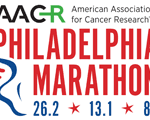The American Red Cross is Now Accepting Hemochromatosis Donors After Not Accepting Them for Years

The American Red Cross is Now Accepting Hemochromatosis Donors After Not Accepting Them for Years
Philadelphia, PA, (August 1, 2022) – The American Red Cross (ARC) has announced as of today, August 1 it’s now accepting voluntary donations from people with hemochromatosis. For years, ARC didn’t accept blood donations from those donors due to technical challenges. Now, those issues are addressed, and the Red Cross will begin its donor reinstatement process. The ARC will then manufacture units from such donations if the donor meets all other qualifications. Those qualifications can be seen here on the ARC website.
Up until June 2022, The American Red Cross, which controls half of the nation’s blood supply, did not accept donations from people who had hemochromatosis, or too much iron in their blood.
There is a policy that states that potential donors are not allowed to receive direct compensation for donating. For those with metabolic diseases such as Hemochromatosis, donating blood would be considered something of value, a treatment. Otherwise, a medical blood draw would have to be paid for as it falls into the category of treatment.
As of today, Red Cross will use this blood and its components to help patients in need of lifesaving blood transfusions. Individuals who need to give more frequently than the standard donation interval (56 days) or do not meet all other donation eligibility criteria will not be accepted for donation that day but will be referred to the Red Cross therapeutic phlebotomy program. These individuals will need a therapeutic phlebotomy procedure, per a physician’s prescription, in select Red Cross locations. Red Cross will no longer charge a fee for therapeutic phlebotomy procedures for individuals with HH.
Two people ecstatic about this new announcement have had their own personal battles with the disease, and both have the genetic mutation for hereditary hemochromatosis.
Kenneth Lowrie, Vice President, Pharmacy of Western Division at Steward Health Care says, “My mother was being treated in the ICU setting for significant liver dysfunction, CHF, and diabetes of unknown origin. Subsequently, a Cardiologist mentioned that this may have all been due to iron overload. It reminded him of a Preceptor that he had in Medical School that passed away because of Hereditary Hemochromatosis. A referral to a Hematologist ensued for genetic testing and other blood tests to determine the primary causes for high ferritin levels (>2,900) and potential iron overload disorders. Since I also had a high ferritin level along with an elevated transferrin saturation, I then obtained a 23 and Me Test online, completed the saliva sample, and within a few weeks had the results back which indicated I had genetic mutations for Hereditary Hemochromatosis. Repeat testing ordered by the Hematologist confirmed the 23 and Me result.”
Like Kenneth, Christine O’Leary, U.S. Board Trustee of Hemochromatosis International says, “My Dad died because this condition was not diagnosed correctly. All we needed was a simple blood test to confirm that he had too much iron in his blood because it’s treatable, but the disease remains largely undiagnosed for a variety of reasons despite the high incidence in the United States. “
They both believe there is a lack of medical screening criteria in place to guide physicians with early identification of this treatable condition. Historically, blood donors with hemochromatosis have been excluded by the American Red Cross without clinical merit. However, now that ARC is making the necessary operational adjustments to accept and use blood donated from individuals with hereditary hemochromatosis, they are hoping that more people’s lives are saved from this disease.
If you want to interview Christine or Kenneth about their personal stories and struggles with hemochromatosis, please email Jennifer Sherlock at jsherlock@jennacommunications.com, or call her at 609-369-3482.
About Hemochromatosis U.S.
U.S. Board Trustee of Hemochromatosis International, Christine O’Leary promotes the early diagnosis of hemochromatosis by raising public awareness, informing the medical community, and encouraging early screening of at-risk populations. Hemochromatosis U.S. provides support and information to individuals and families who are affected by this covert disease. Our vision is to spare another family from experiencing this preventable tragedy and change the perception around hemochromatosis, also known as ‘iron overload’.

 Previous Post
Previous Post Next Post
Next Post